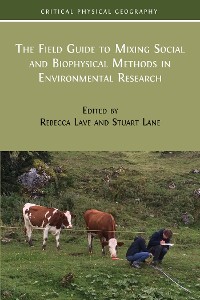The Field Guide to Mixing Social and Biophysical Methods in Environmental Research
Rebecca Lave
Naturwissenschaften, Medizin, Informatik, Technik / ÷kologie
Beschreibung
Despite ongoing debates about its origins, the Anthropocene—a new epoch characterized by significant human impact on the Earth's geology and ecosystems—is widely acknowledged. Our environment is increasingly a product of interacting biophysical and social forces, shaped by climate change, colonial legacies, gender norms, hydrological processes, and more. Understanding these intricate interactions requires a mixed-methods approach that combines qualitative and quantitative, biophysical and social research.
However, mixed-methods environmental research remains rare, hindered by academic boundaries, limited training, and the challenges of interdisciplinary collaboration. Time, funding, and the integration of diverse data further complicate this research, whilst the dynamics and ethics of interdisciplinary teams add another layer of complexity.
Despite these challenges, mixed-methods research offers a more robust and ultimately transformative understanding of environmental questions. This Field Guide aims to inspire and equip researchers to undertake such studies. Organized like a recipe book, it assists researchers in the preparation of their field work, as well as offering entry points to key methods and providing examples of successful mixed-methods projects.
This book will be of interest to scholars wishing to tackle environmental research in a more holistic manner, spanning ‘sister’ disciplines such as anthropology, statistics, political science, public health, archaeology, geography, history, ecology, and Earth science.
Kundenbewertungen
Earth Systems Sciences, Environmental research, Field Guide, Critical Physical Geography, Mixed-Methods Research, Anthropocene




























